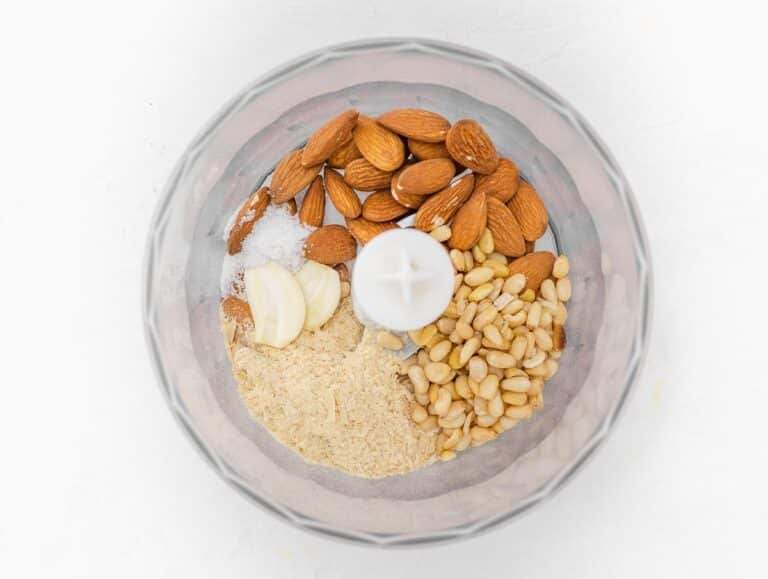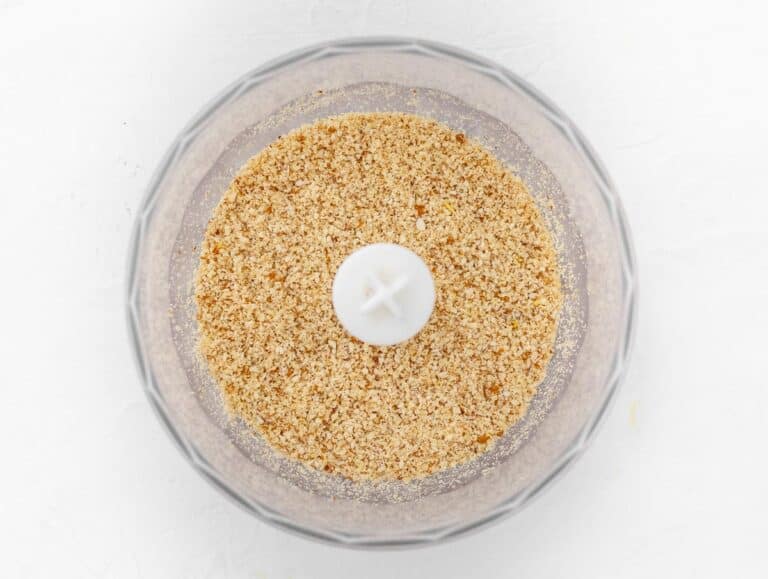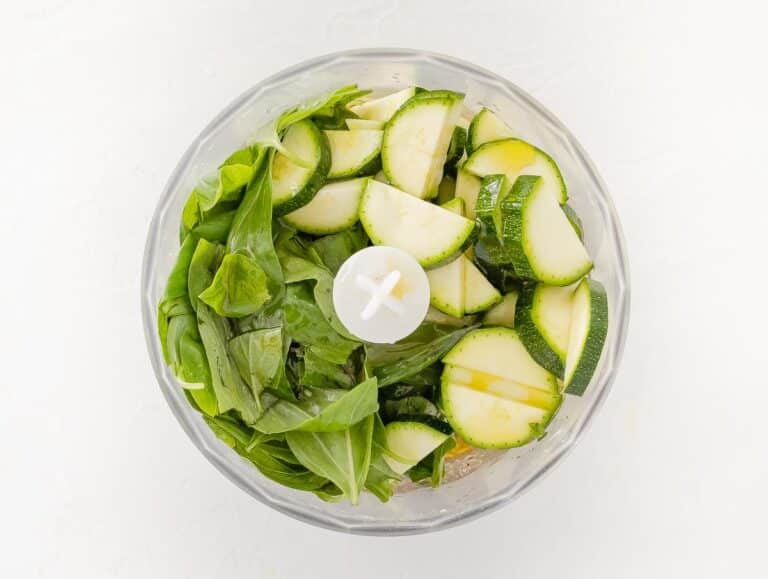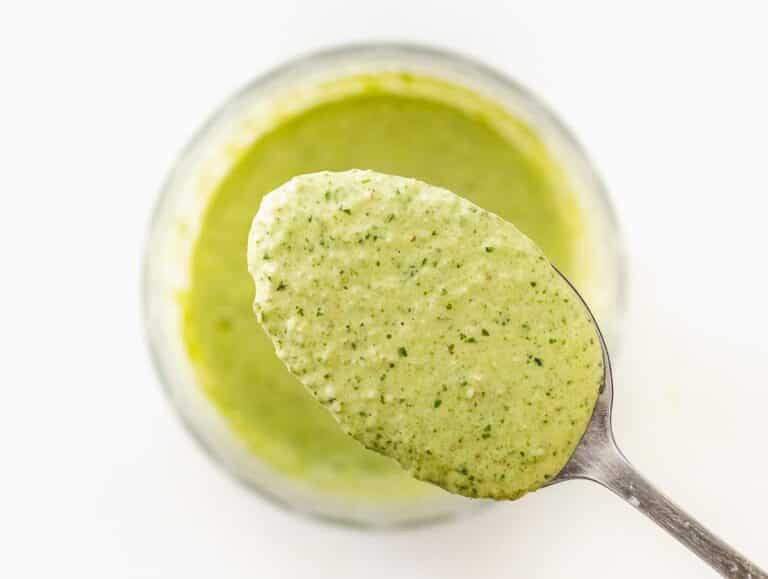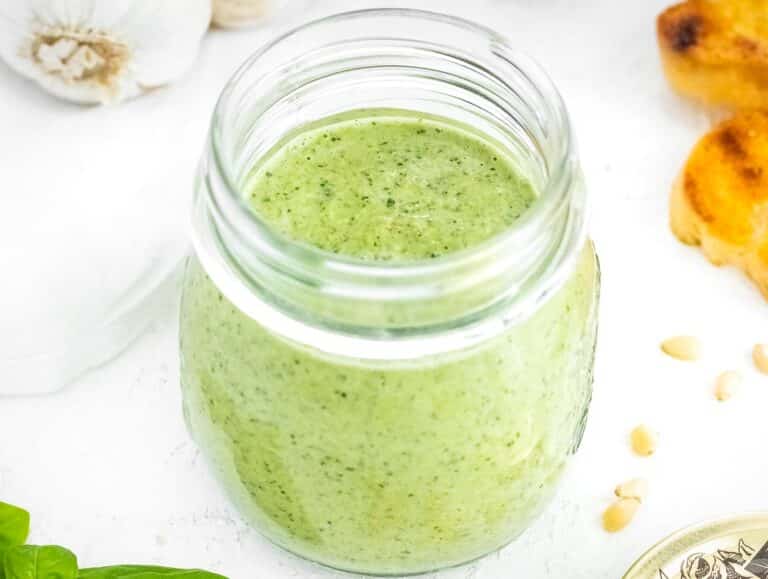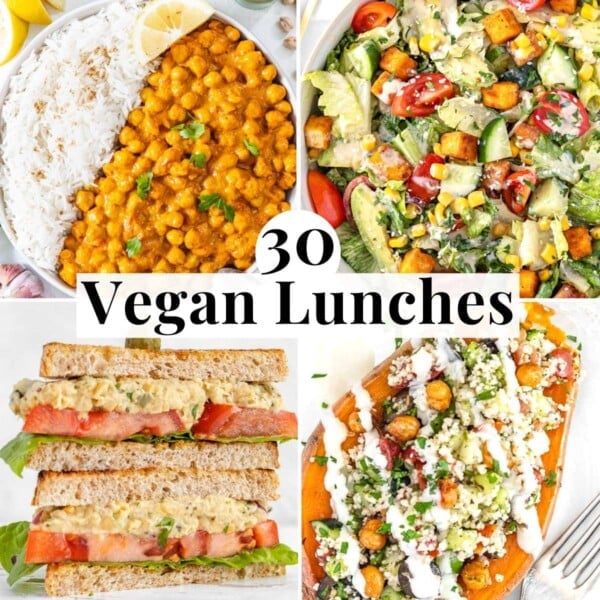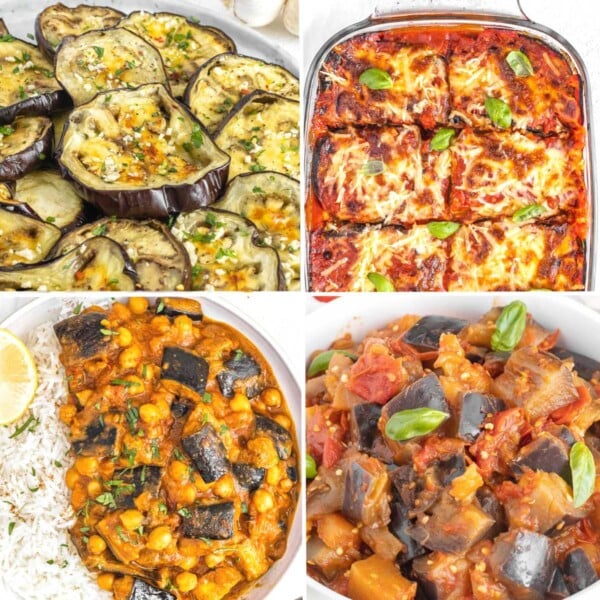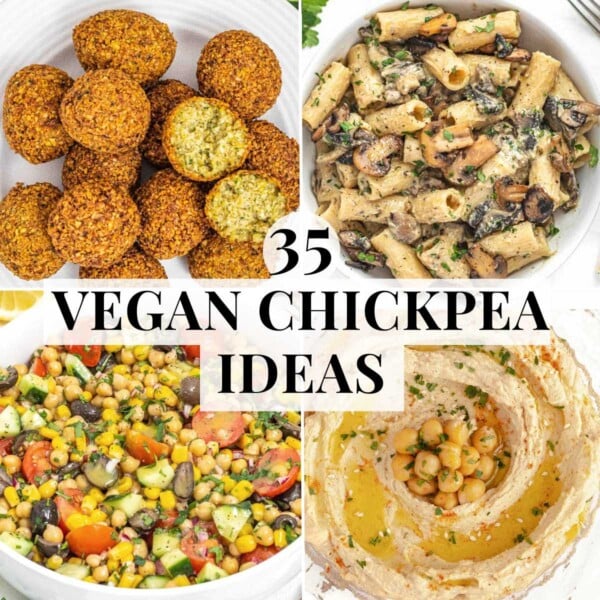Zucchini pesto might seem unusual but it’s actually a delicious, light, and creamy pesto sauce you can make in 5 minutes with simple ingredients.
Serve it just like any other pesto. It’s especially delicious with warm pasta, cold pasta salads, and as a topping on pizza.
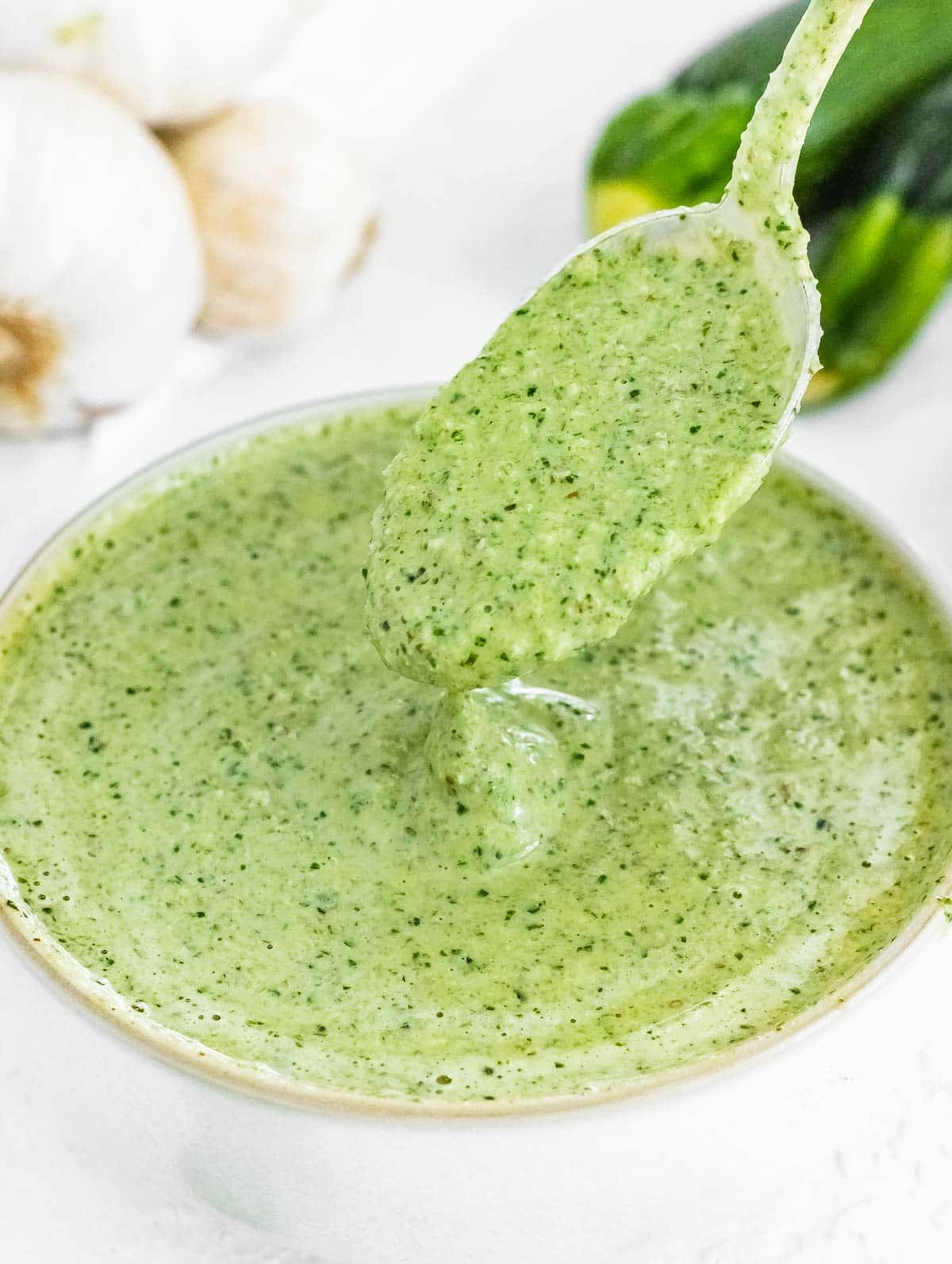
To learn more on this topic, check out our guide on how to make vegan pesto + 9 pesto recipes.
Zucchini pesto is delightful. It’s probably the lightest of all pestos we’ve made. It has a mild flavor thanks to the raw zucchini and fresh basil and its creaminess makes it perfect to coat a dish of pasta or homemade gnocchi.
Our recipe is very simple and is built upon our tried and tested vegan basil pesto. The best thing about it is that you don’t have to cook the zucchini, so you can put this sauce together in 5 minutes.
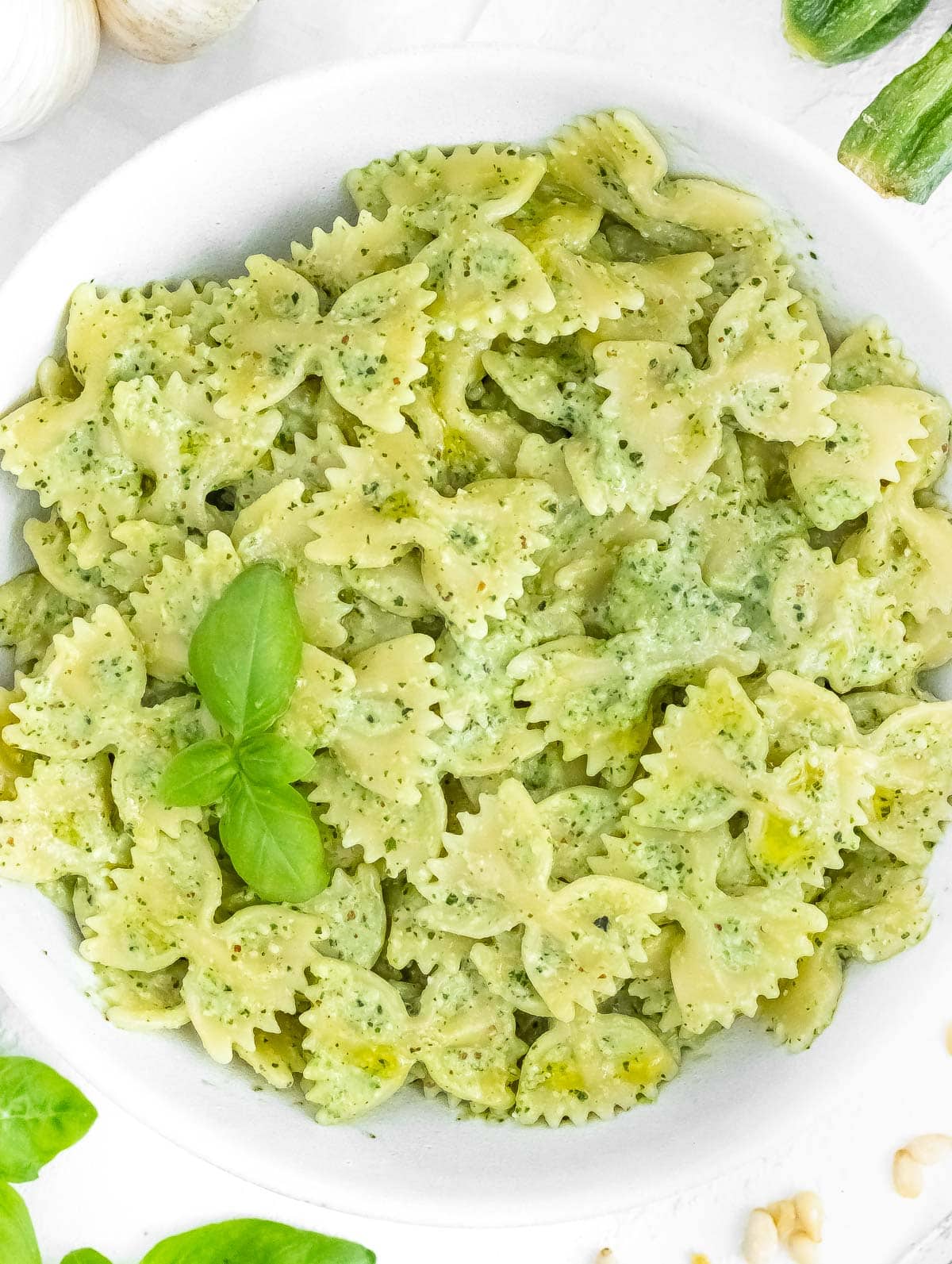
As with most of our recipes, this zucchini pesto is also dairy-free and suitable for vegans and vegetarians alike.
We replace parmesan cheese with nuts and nutritional yeast. You can choose between almonds, walnuts, pistachios, macadamia, and cashew.
What we recommend, although not strictly necessary, is to also add pine nuts. They make this recipe taste ever so slightly more authentic.
Ingredients
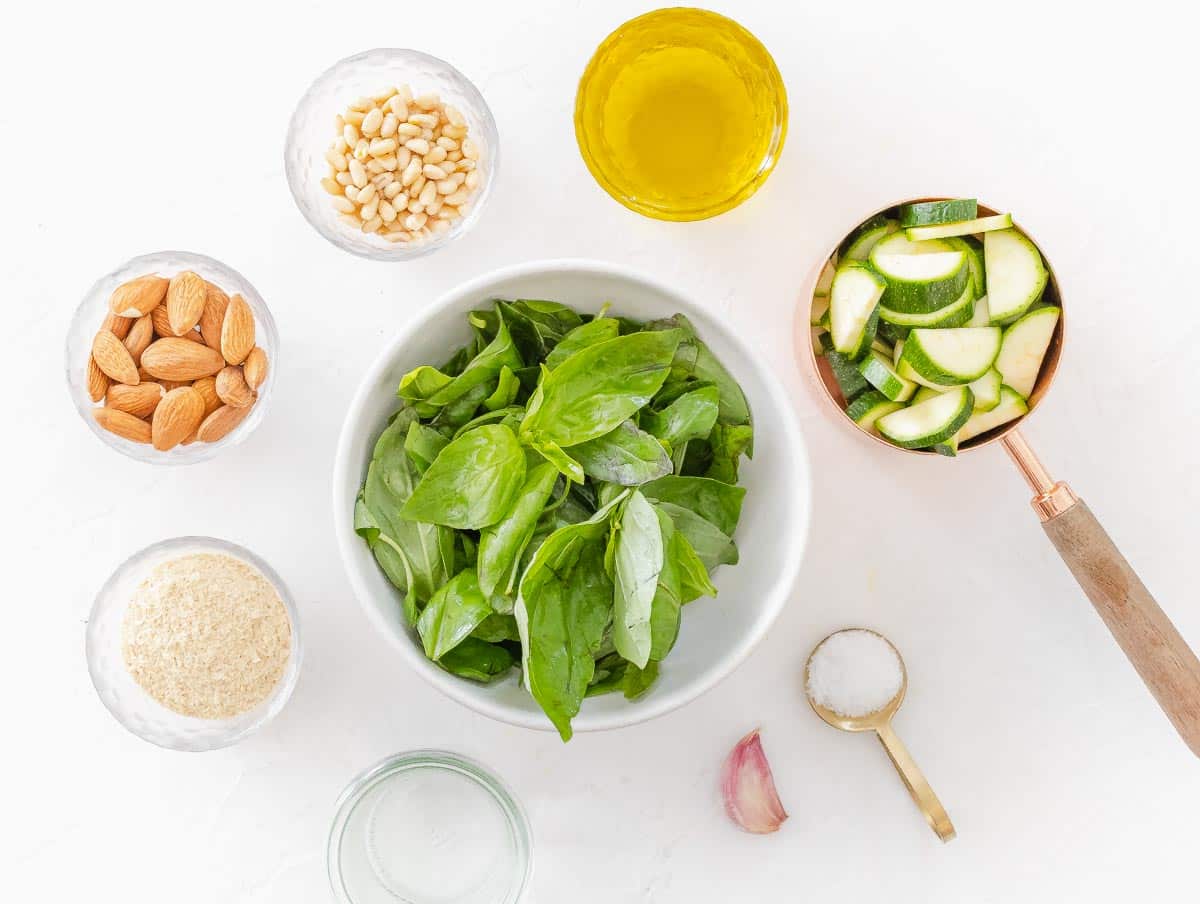
Zucchini: try to use small, fresh, hard-to-the-touch zucchini. They are likely to be sweeter and not bitter. Old, large zucchini tend to be bitter, and won’t taste good in the pesto.
Basil: we add fresh basil to give this sauce that pesto feel. Also, basil is delicious with zucchini. You can substitute arugula, mint, parsley, and cilantro for the basil.
Olive oil: best if extra virgin to add fruity notes and depth to the pesto. EV olive oil is also healthier than regular olive oil thanks to its high amount of antioxidants.
Nuts: almonds, walnuts, cashews, pistachios, and macadamia are all great options. Pick your favorite. We usually do it with almonds. It’s best if the nuts are raw and unsalted. If you can only find them salted, then reduce the added salt in this recipe.
Pine nuts: although they are nuts, we list them separately because we think they should always be added to make a great pesto. Their distinctive flavor and high healthy fat content make any pesto recipe shine. If you can’t find them, then just use more of the other nuts.
Garlic: Another key pesto ingredient. Add more or less based on your preferences.
Nutritional yeast: to add a mild cheesy flavor.
Salt: since there’s no salty parmesan, it’s important to add some salt to bring out the flavor of the zucchini and basil.
Water: optional. This is only necessary if you want to make a thinner pesto, however, in general zucchini contains enough water so there might be no need to add more.
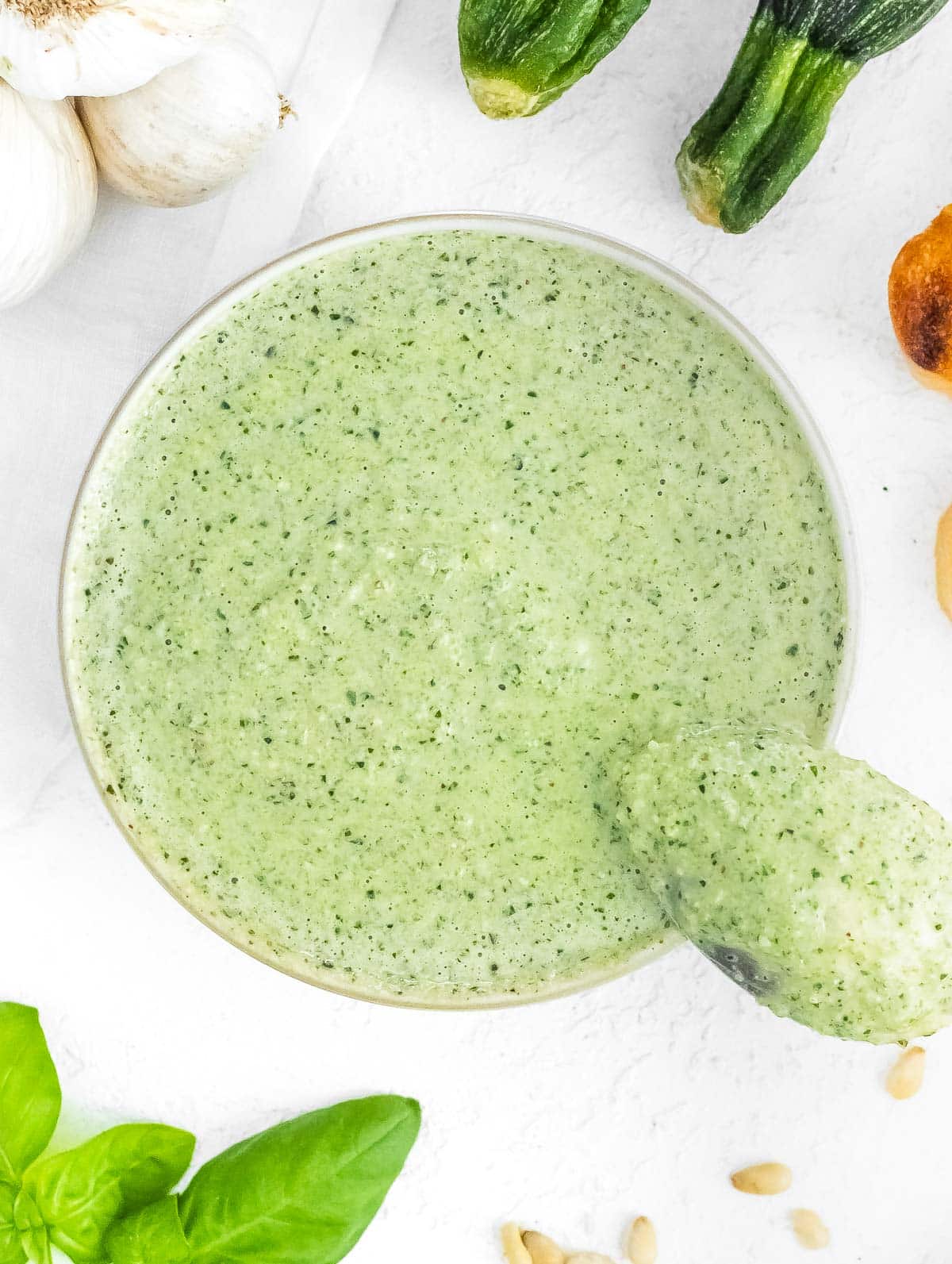
Instructions
Peel and cut the garlic in half lengthwise, remove its core, if any, and add the clove to the food processor.
Note: the core of the garlic can be hard to digest; we remove it to have a lighter pesto.
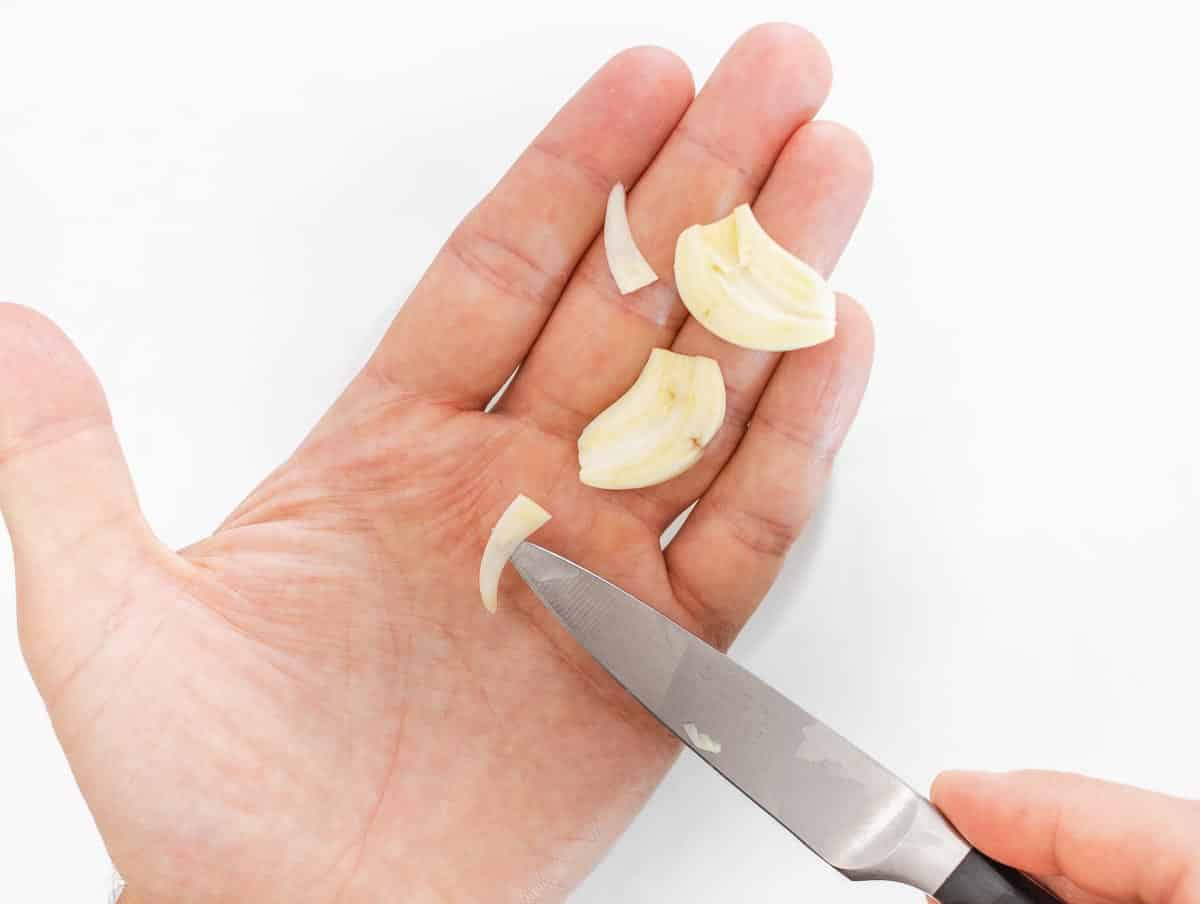
Add almonds, pine nuts, nutritional yeast, and salt.
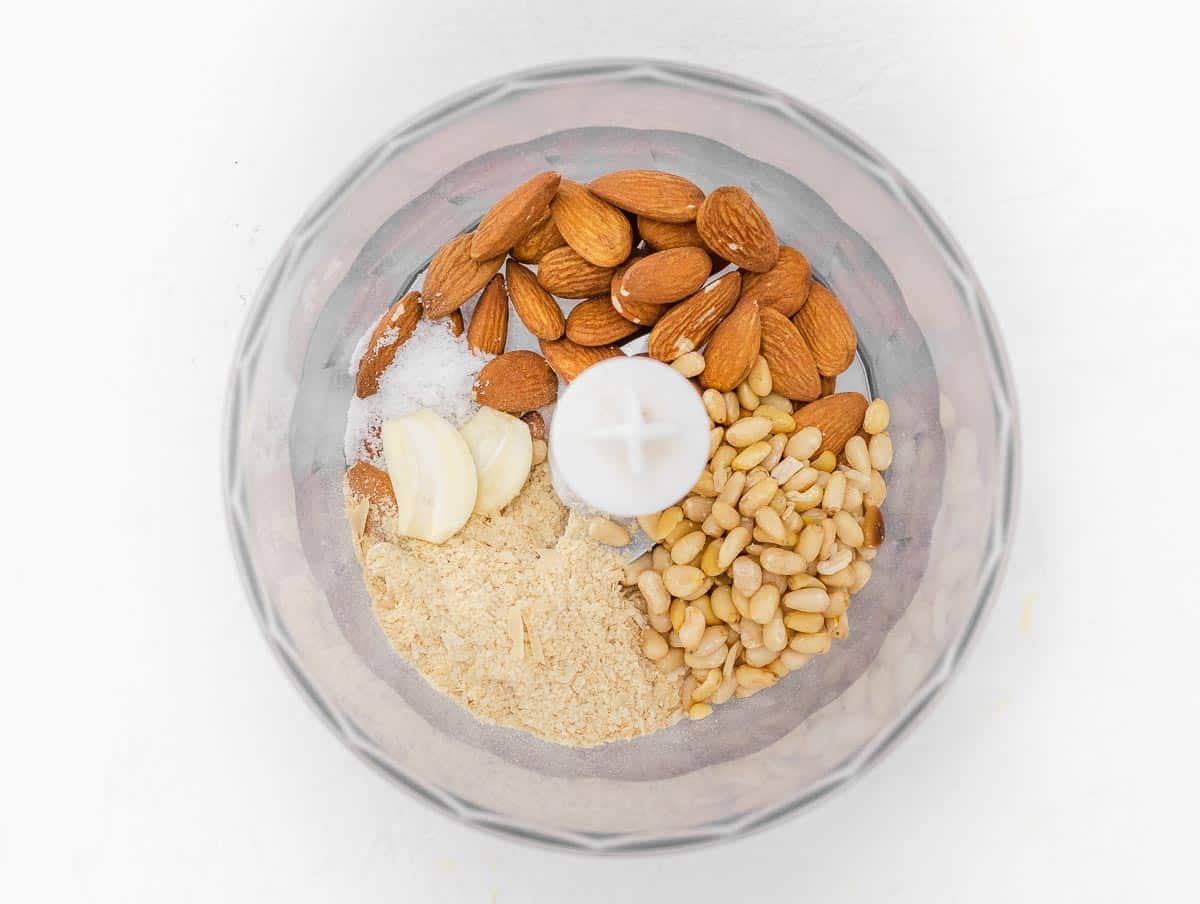
Blend until you get a finely coarse texture (1 minute).
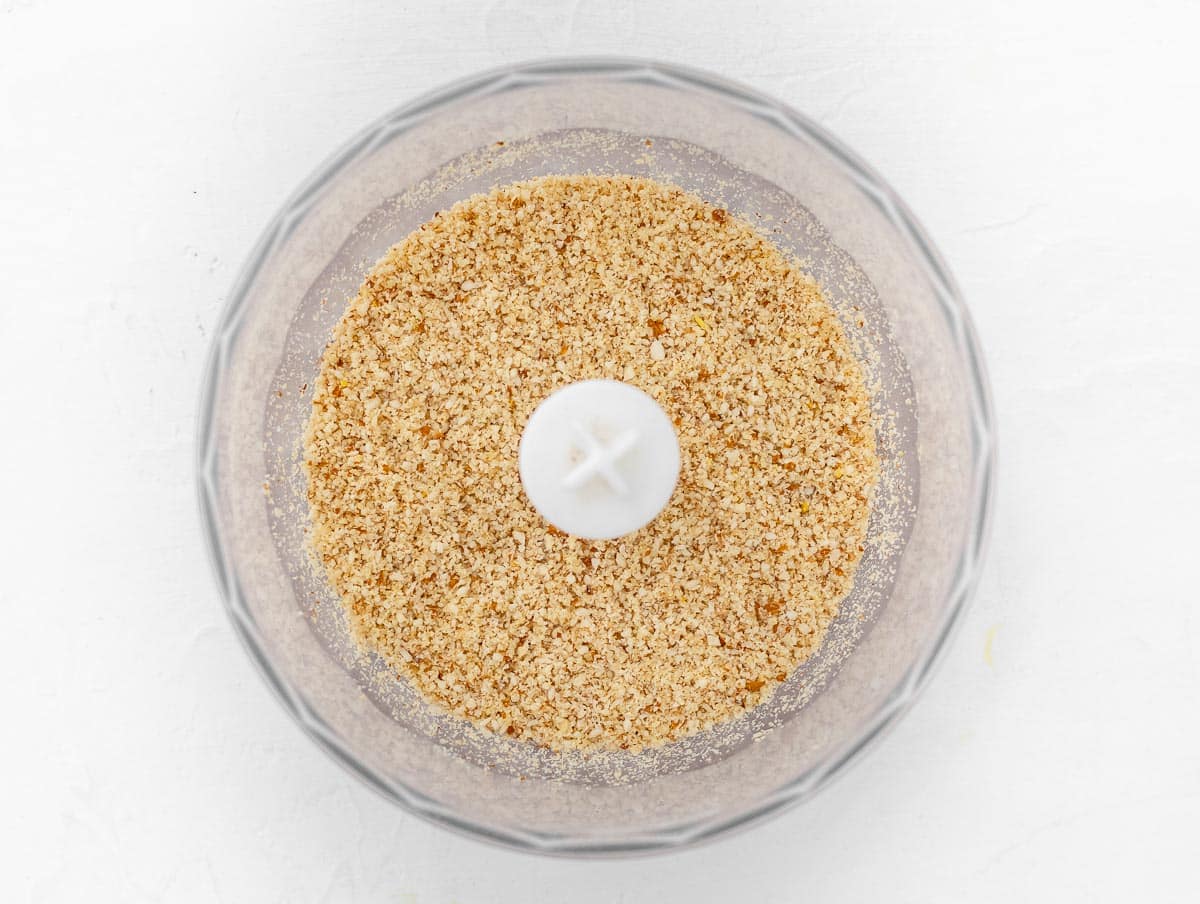
Add chopped zucchini, basil leaves, and olive oil.
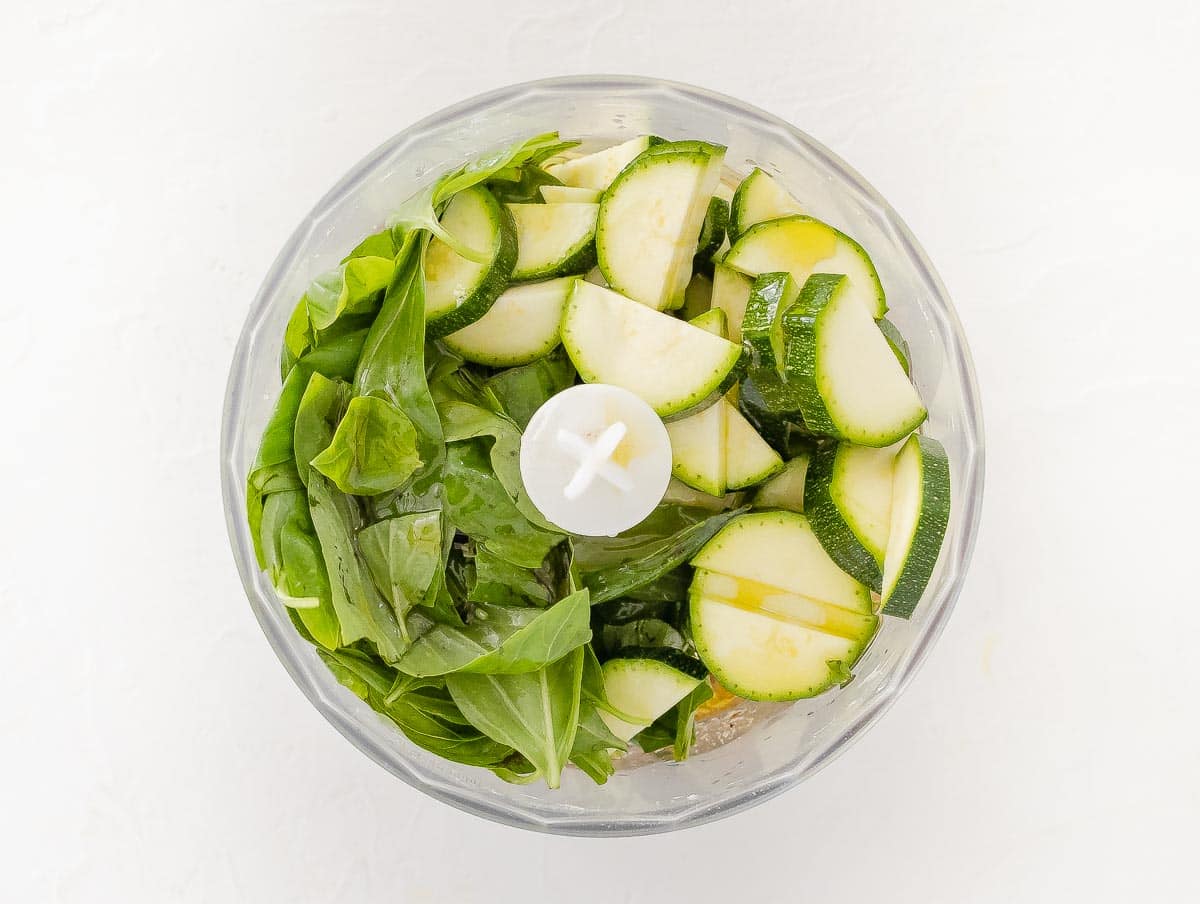
Pulse a few times until the zucchini and the basil are fully incorporated with the other ingredients. Taste and adjust for salt. If you prefer a thinner pesto, add more oil or water.
Note: pulse instead of blending continuously. The heat from blending ruins the basil.
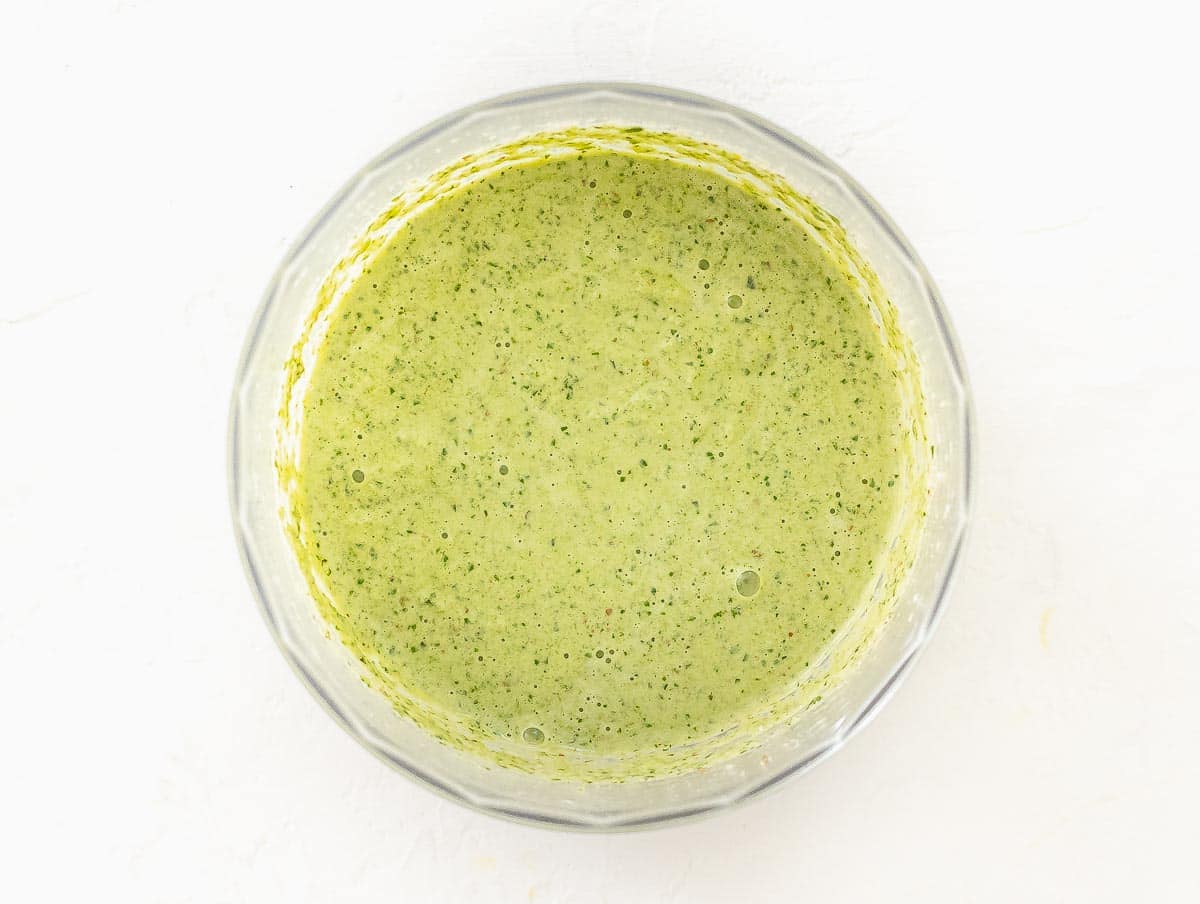
Use immediately, or store in the refrigerator in a bowl with a thin layer of olive oil on top to prevent it from turning dark. Alternatively, transfer into a small jar and freeze for up to 6 months.
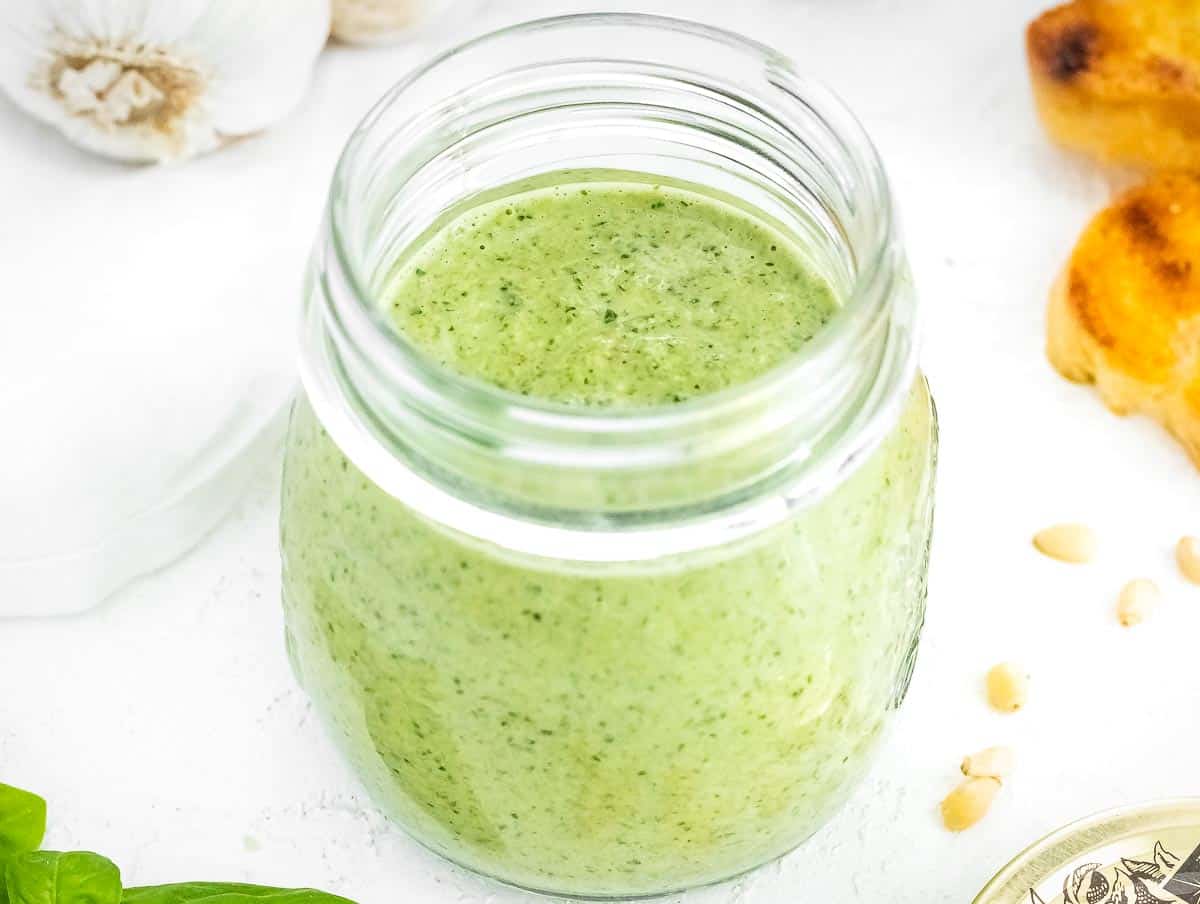
Serving suggestions
To use it with pasta, add pesto to a mixing bowl, add ½ cup of pasta cooking water, and stir to dilute it.
Reserve some more pasta water for later.
Drain pasta, add it to the bowl with the zucchini pesto, and stir to combine. Add more reserved pasta water or more pesto if necessary. Finish with a drizzle of extra virgin olive oil and serve.
Tip: remember to salt the pasta cooking water with a generous amount of salt before cooking the pasta.
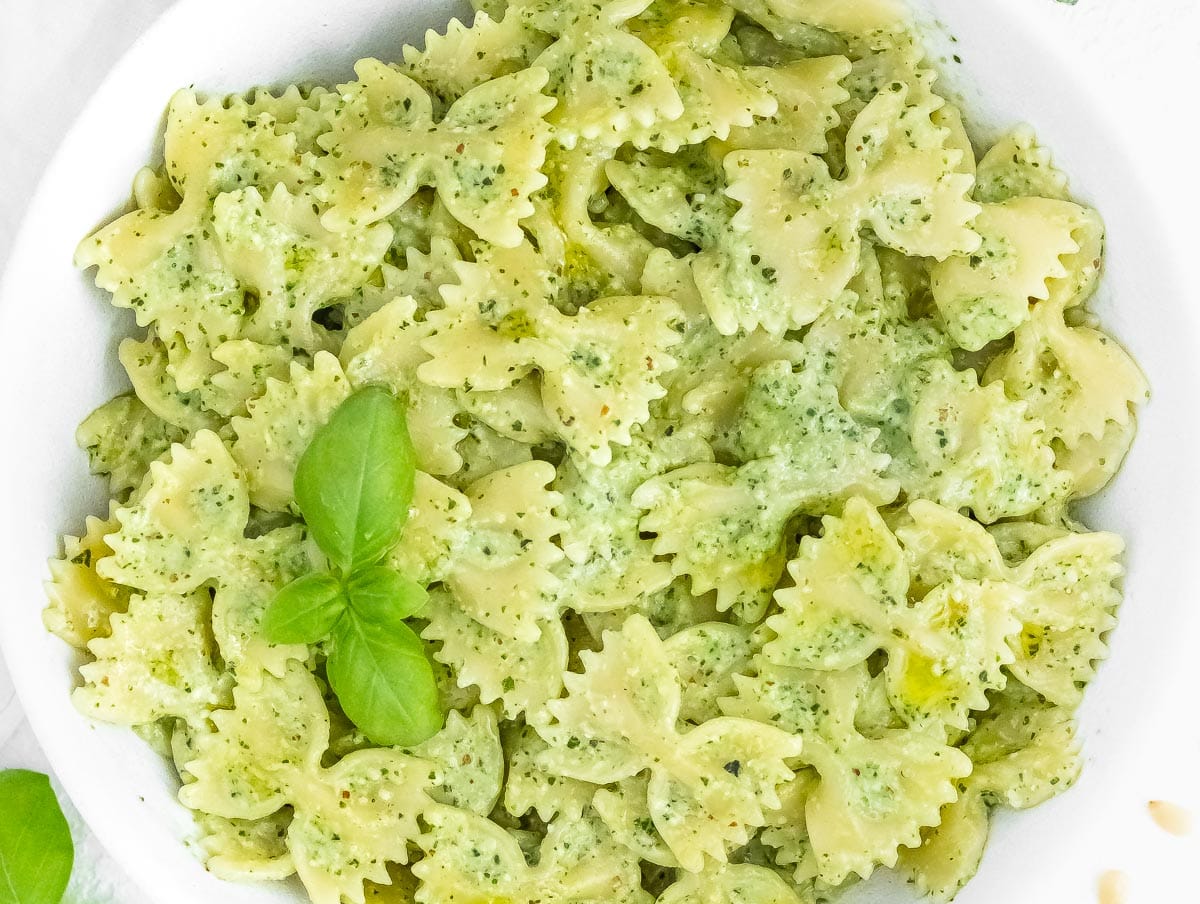
If you’re loving the combination of zucchini and pasta, check out our easy zucchini pasta recipe.
More pesto recipes
Pesto is an easy way to dress vegan salads, make a bowl of pasta pop, and drizzle a serving of fried tofu. It’s also a great way to increase your veggie intake, so take your pick from our pesto favorites here:
- Arugula pesto: a green and healthy sauce that works perfectly in potato salad and vegan pasta salad
- Parsley pesto pairs well with roasted potatoes and is a great sauce on plant-based proteins such as vegan fish and marinated tofu
- Artichoke pesto: a creamy and mild condiment perfect for fusilli pasta and pasta salads
- Chestnut pesto is an indulgent condiment that we pair with pasta and roasted mushrooms. It’s cozy, scrumptious, and perfect for fall and winter
- Sun–dried tomato pesto with healthy omega-3 fats is a great dipping sauce served with focaccia and veggie sticks
- Red pepper pesto is perfect in a sandwich as a spread. Pair with grilled eggplant and fresh arugula for a complete meal
Storage
Store zucchini pesto in the fridge for up to 5 days. To make it stay green and fresh, transfer it to a jar or to an airtight container, and cover it with a thin layer of oil. This prevents oxidation and keeps it fresher.
You can also freeze it for up to 6 months. Transfer it to a jar or ice cube tray and pop it into the freezer.
Thawing depends on how you want to use it. To use it with pasta, all you have to do is to toss a couple of iced pesto cubes in a mixing bowl with ½ cup of pasta cooking water, then toss in the pasta.
To use it as a spread, on pizza, or to drizzle on veggies, then thaw in the refrigerator overnight.
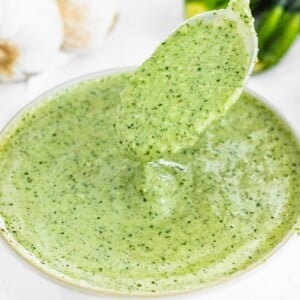
Zucchini Pesto
Equipment
- Food processor or blender
Ingredients
- 1 small garlic clove
- ⅓ cup almonds (or walnuts, pistachios, cashews, macadamia)
- 2 tablespoons pine nuts
- 3 tablespoons nutritional yeast
- ½ teaspoon salt
- 1 packed cup zucchini chopped
- 1 packed cup basil leaves (or parsley)
- ¼ cup extra virgin olive oil
Instructions
- Peel and cut the garlic in half lengthwise, remove its core, if any, and add the clove to the food processor.Note: the core of the garlic can be hard to digest; we remove it to have a lighter pesto.
- Add almonds, pine nuts, nutritional yeast, and salt.
- Blend until you get a finely coarse texture (1 minute).
- Add chopped zucchini, basil leaves, and olive oil.
- Pulse a few times until the zucchini and the basil are fully incorporated with the other ingredients.Taste and adjust for salt. If you prefer a thinner pesto, add more oil or water.Note: pulse instead of blending continuously. The heat from blending ruins the fresh herbs.
- Use immediately, or store in the refrigerator in a bowl with a thin layer of olive oil on top to prevent it from turning dark. Alternatively, transfer into a small jar and freeze for up to 6 months.
- To use it with pasta, add pesto to a bowl, add ½ cup of pasta cooking water, and stir to dilute it. Reserve some more pasta water for later.Drain pasta, add it to the bowl with the pesto and stir to combine. Add more reserved pasta water or more pesto if necessary. Finish with a drizzle of extra virgin olive oil and serve.Tip: remember to salt the pasta cooking water with a generous amount of salt. before cooking the pasta.
Notes
Nutrition
You might also like:
Collections
30 Vegan Lunch Ideas
Collections
25 Easy Vegan Eggplant Recipes
Collections


